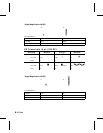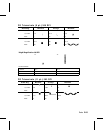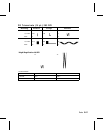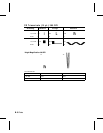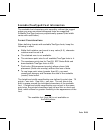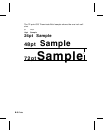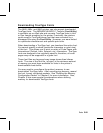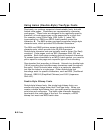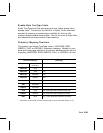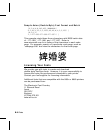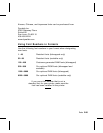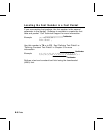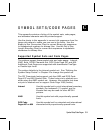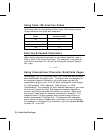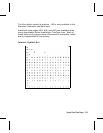
Using Asian (Double-Byte) TrueType Fonts
Previously, our printers supported downloadable fonts, but with
limited code pages. Characters are represented by character
code pages. These fonts are designed to be regionally specific;
therefore, all code pages may not be supported in a given font.
For example, using Code Page 1252 (Latin 1), index 192
(represented as
~192
in an MPCL batch packet) prints this
character,
À
. The 9850 printer previously supported single-byte
character sets, which provided 255 different characters.
The 985x and 9860 printers support printing double-byte
character sets, which provide over 65,000 characters.
Double-byte character sets are typically used in Asian (Far East)
countries. Code pages, such as 932 (Japanese Shift JIS) are
available. Each code page contains several thousand characters.
To access these characters in an MPCL batch packet, you need to
pick a specific code page and a specific type of font encoding.
One standard font encoding is Unicode. Unicode is a double-byte
(16-bit) encoding that includes many characters used throughout
the world. Each Unicode index refers to a particular character,
just like the index in a code page. Other double-byte font
encodings exist for specific characters, such as BIG5 (Traditional
Chinese), GB2312 (Simplified Chinese) and SJIS (Japanese
Shift-JIS).
Double-Byte Bitmap Fonts
Double-byte bitmap fonts, like single-byte bitmap fonts, are
smaller and may image faster than TrueType fonts. When you
create a double-byte bitmap font, you must specify a particular
point size and code page. The batch data character mapping
must match the code page of the font. For example, a BIG5
bitmap font must use BIG5 batch data.
B-22
Fonts



